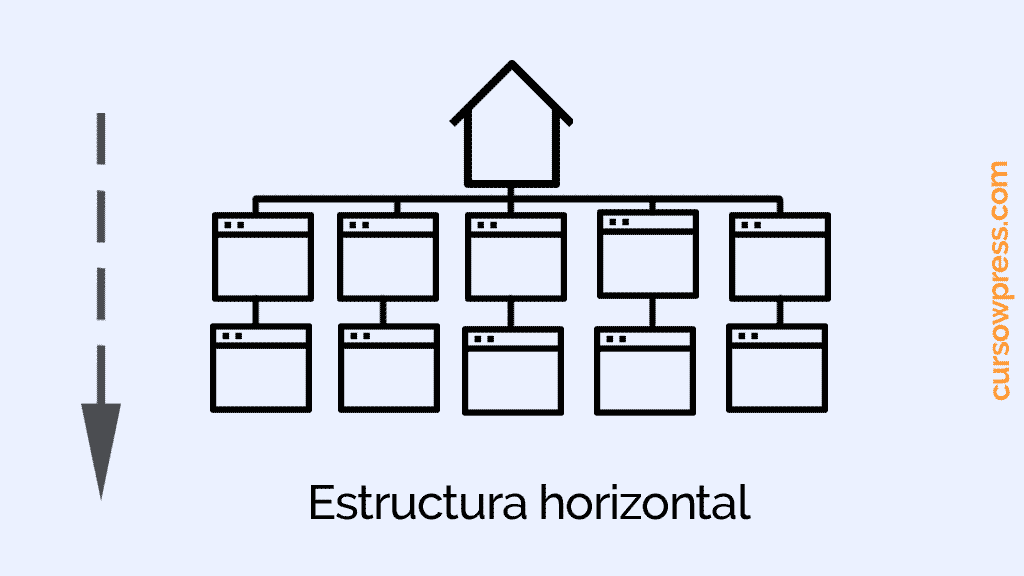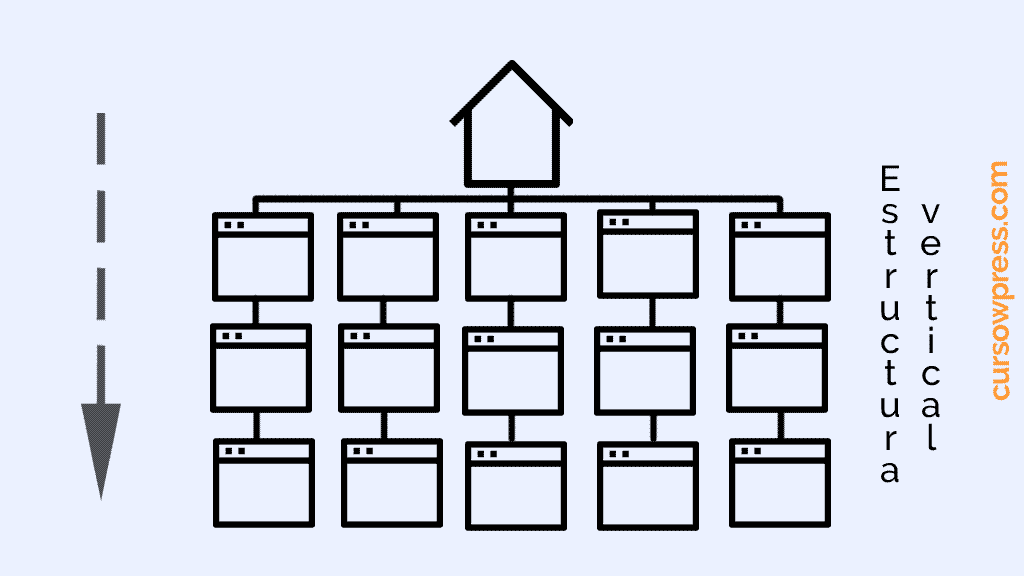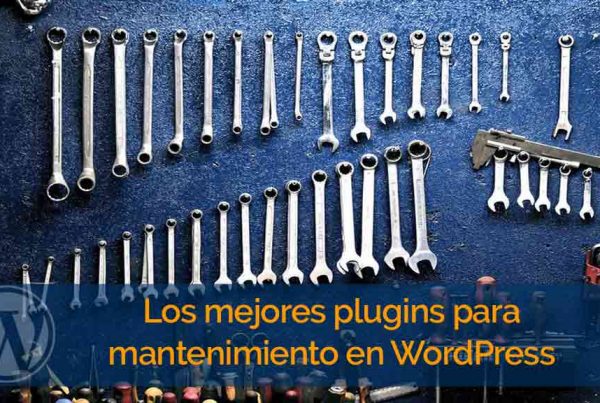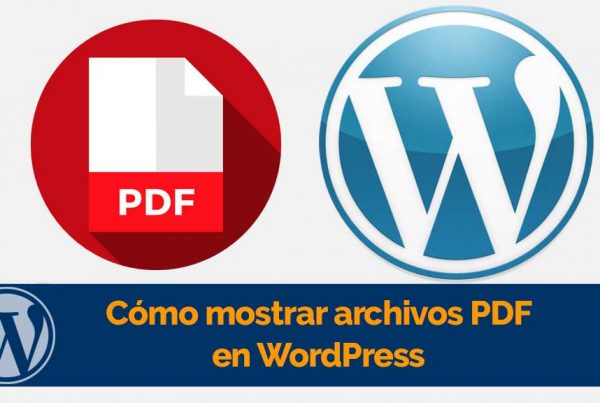When we talk about SEO most of the time we refer to:
- Links,
- Keywords,
- Image optimization
- Plugins,
And to an endless number of factors and items that influence the web positioning. But we usually forget that structure of our page at the same time is taxed on SEO.
Yes, the web structure is an important factor directly related to navigability, user experience and the positioning.
As we anticipated in the guide:
What is web architecture and how it influences SEO in WordPress
For ensure traceability of your website the first thing is to guarantee a structure or architecture of site that is friendly with the search engines but fundamentally with the users.
By now you may be wondering:
What is the web structure?
The web structure is the organization and distribution of items on a certain site. It then has to do with how different pages that make up a website they relate each.
It is usually believed and at the same time affirmed in different spaces related to the teaching of page creation that the web structure refers to an aesthetic aspect:
- Header
- Logo
- Browser
- Each content
- Side bars
- Footer
And although those items are related to the structure.
The truth of the matter is that web structure refers to the way in which the different pages that are part of a certain blog, site or ecommerce they interact with each other.
What affects the navigability and the user experience.
And this last one is very important.
Why is user experience important?
Because we will guarantee higher recurrence of visitors, longer stay time. And ultimately happy users with the content that we share on our website and its layout.
The human element it is a capital value factor for positioning purposes.
Long ago SEO ceased to be a mechanical and absurd process through which those interested in climbing positions in the SERP or Search Engine Results Page (search engine results) stacked keywords without thinking about the quality and usefulness of content.
Web structure and SEO how they relate
We already know that Google he is not a person, he is not human.
Google is the closest thing to a robot that moves with algorithms:
- Panda,
- Penguin,
- hummingbird,
- dove…
And that is for this reason that all it does is measure. Quantify everything. Take into account the numbers.
To the point that it even manages to make evaluations of purely qualitative aspects.
Qualitative aspects?
Yes, more human things that are not so easy to translate into numbers.
As which?
How the quality of an article, the usefulness of certain content. In short, all those items that added together we call user experience.
How does google determine user experience?
As a good robot that moves with algorithms: Measuring.
Measuring what things?
- The residence time of users on your website, blog or ecommerce.
- Click-through rate o CTR (Click Through Rate)
- The Scroll Depth of visitors
- The bounce or abandon rate
- Those shared on social networks
How to create an optimal web structure?
Remembering that the structure must above all favor the navigability and user experience.
To create an optimal web structure then we must:
Keep an amount adequate pages on our site
This will be determined by the niche. They will never be the same in number of pages, the website of a veterinarian who offers his services on the net to a sports equipment store.
Even though there is no magic number, the more pages the more difficult it is to navigate.
Create an understandable main navigation menu
Some pages have menus that are like the control panel of an airplane. Huge, complicated.
Stick to the essentials. In the case of the menu less is more.
The menu is determined by the amount of pages with static information that you have on your website. Which brings us to the next point.
Optimize static pages
Do not be one of those who neglect the creation of pages with static information. Without important and much. This is why we tell you everything you need to know in this dedicated tutorial: Static pages that should not be missing on your WordPress blog.
Maintain a horizontal structure
The structures refer to the depth that exists between the home or start of your website and its last page:
While more vertical be your page, that is, the more depth levels have more difficult It will be the work of the google crawling robots or spiders.
Enhance internal linking
The web structure or the relationship between the pages of your online site are closely associated with the internal linking. One of the pillars of SEO on page:
And you can learn more about it here:
One more tip
If you want to get the most out of these tips from your page or blog, sign up for best online WordPress course in Spanish. Become an expert.







